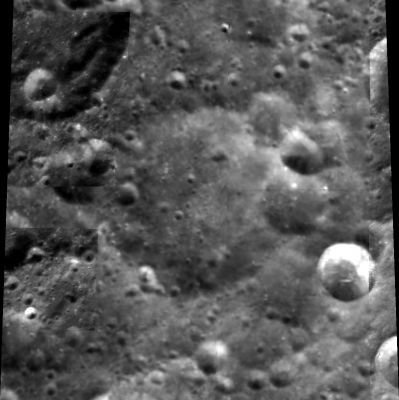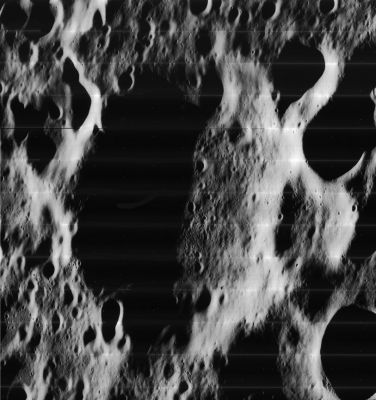Difference between revisions of "Guillaume"
| Line 5: | Line 5: | ||
|} | |} | ||
[http://www.lpod.org/coppermine/displayimage.php?pid=2091&fullsize=1 [[Image:normal_guillaume-clem1.jpg|external image normal_guillaume-clem1.jpg]]][http://www.lpod.org/coppermine/displayimage.php?pid=2133&fullsize=1 [[Image:normal_Guillaume-LO-V-053-h1&h2.jpg|external image normal_Guillaume-LO-V-053-h1&h2.jpg]]]<br /> Left: ''[http://lpod.org/coppermine/displayimage.php?pos=-2091 Clementine]'', Right: ''[http://lpod.org/coppermine/displayimage.php?pos=-2133 LO-V-053-h1&h2]''<br /> <br /> <div id="toc"> | [http://www.lpod.org/coppermine/displayimage.php?pid=2091&fullsize=1 [[Image:normal_guillaume-clem1.jpg|external image normal_guillaume-clem1.jpg]]][http://www.lpod.org/coppermine/displayimage.php?pid=2133&fullsize=1 [[Image:normal_Guillaume-LO-V-053-h1&h2.jpg|external image normal_Guillaume-LO-V-053-h1&h2.jpg]]]<br /> Left: ''[http://lpod.org/coppermine/displayimage.php?pos=-2091 Clementine]'', Right: ''[http://lpod.org/coppermine/displayimage.php?pos=-2133 LO-V-053-h1&h2]''<br /> <br /> <div id="toc"> | ||
| − | + | ||
| − | |||
==Images== | ==Images== | ||
[http://www.lpod.org/coppermine/thumbnails.php?album=search&type=full&search=Guillaume LPOD Photo Gallery] [http://www.lpi.usra.edu/resources/lunar_orbiter/bin/srch_nam.shtml?Guillaume%7C0 Lunar Orbiter Images] [http://www.lpi.usra.edu/resources/apollo/search/feature/?feature=Guillaume Apollo Images]<br /> <br /> | [http://www.lpod.org/coppermine/thumbnails.php?album=search&type=full&search=Guillaume LPOD Photo Gallery] [http://www.lpi.usra.edu/resources/lunar_orbiter/bin/srch_nam.shtml?Guillaume%7C0 Lunar Orbiter Images] [http://www.lpi.usra.edu/resources/apollo/search/feature/?feature=Guillaume Apollo Images]<br /> <br /> | ||
| Line 12: | Line 11: | ||
''([http://the-moon.us/wiki/LAC%20zone LAC zone] 33A2)'' [http://planetarynames.wr.usgs.gov/images/Lunar/lac_33.pdf USGS Digital Atlas PDF]<br /> <br /> | ''([http://the-moon.us/wiki/LAC%20zone LAC zone] 33A2)'' [http://planetarynames.wr.usgs.gov/images/Lunar/lac_33.pdf USGS Digital Atlas PDF]<br /> <br /> | ||
==Description== | ==Description== | ||
| − | This is an unusual old crater. Normally as craters age they are modified by seismic shaking (from subsequent impacts), blasted by ejecta from nearby and distant impacts, and sometimes flooded by lavas. These modifications produce a typical aged crater with smooth walls, filled in floor and buried central peaks - there are many craters in the nearside southern hemisphere that look like that. Guillaume is similar in that its terraces are gone and it has a wide flattish floor, but it also has a broad and low central mound. This looks like what happens when a crater relaxes isostatically - that is, the rock that it has formed in slowly deforms by flowage. The rounded rim of Guillaume supports this interpretation. How could this one crater be isostatically compensated when its neighbors aren't? Well, maybe it's not; perhaps its just an unusual modification pattern. But it could be because it is older than its neighbors. Perhaps it formed in a region of the crust that was warm enough to deform slowly. By the time the later craters formed the crust had cooled and become rigid. There may be other old craters that have been compensated but are harder to identify as craters. For example, if there were a few more craters like the cluster of craters on Guillaume's eastern rim (basin secondaries?) and the scattered craters on the western side, the crater would nearly disappear, and the rounded central mound would just be ''an accident of topography''. <span class="membersnap">- | + | This is an unusual old crater. Normally as craters age they are modified by seismic shaking (from subsequent impacts), blasted by ejecta from nearby and distant impacts, and sometimes flooded by lavas. These modifications produce a typical aged crater with smooth walls, filled in floor and buried central peaks - there are many craters in the nearside southern hemisphere that look like that. Guillaume is similar in that its terraces are gone and it has a wide flattish floor, but it also has a broad and low central mound. This looks like what happens when a crater relaxes isostatically - that is, the rock that it has formed in slowly deforms by flowage. The rounded rim of Guillaume supports this interpretation. How could this one crater be isostatically compensated when its neighbors aren't? Well, maybe it's not; perhaps its just an unusual modification pattern. But it could be because it is older than its neighbors. Perhaps it formed in a region of the crust that was warm enough to deform slowly. By the time the later craters formed the crust had cooled and become rigid. There may be other old craters that have been compensated but are harder to identify as craters. For example, if there were a few more craters like the cluster of craters on Guillaume's eastern rim (basin secondaries?) and the scattered craters on the western side, the crater would nearly disappear, and the rounded central mound would just be ''an accident of topography''. <span class="membersnap">- tychocrater <small>Aug 11, 2007</small></span><br /> <br /> |
==Description: Wikipedia== | ==Description: Wikipedia== | ||
| − | [http://en.wikipedia.org/wiki/Guillaume_(crater) Guillaume]<br /> This name is not printed on lunar farside maps such as ''Hallwag'''s or Antonin Rukl's.<span class="membersnap">- | + | [http://en.wikipedia.org/wiki/Guillaume_(crater) Guillaume]<br /> This name is not printed on lunar farside maps such as ''Hallwag'''s or Antonin Rukl's.<span class="membersnap">- DannyCaes <small>Dec 4, 2011</small></span><br /> <br /> |
==Is it a rille? Or a fault? Or a scarp?== | ==Is it a rille? Or a fault? Or a scarp?== | ||
What sort of feature is running halfway between '''Guillaume''' and '''Guillaume D'''?<br /> Is it a rille? Or a fault? Or perhaps a scarp? Or something else? See''':''' http://bit.ly/2xGkEeS<br /> <br /> | What sort of feature is running halfway between '''Guillaume''' and '''Guillaume D'''?<br /> Is it a rille? Or a fault? Or perhaps a scarp? Or something else? See''':''' http://bit.ly/2xGkEeS<br /> <br /> | ||
| Line 24: | Line 23: | ||
<br /> <br /> | <br /> <br /> | ||
---- | ---- | ||
| − | + | </div> | |
Revision as of 17:24, 15 April 2018
Contents
Guillaume
| Lat: 45.4°N, Long: 173.4°W, Diam: 57 km, Depth: km, Rükl: (farside) |


Left: Clementine, Right: LO-V-053-h1&h2
Images
LPOD Photo Gallery Lunar Orbiter Images Apollo Images
Maps
(LAC zone 33A2) USGS Digital Atlas PDF
Description
This is an unusual old crater. Normally as craters age they are modified by seismic shaking (from subsequent impacts), blasted by ejecta from nearby and distant impacts, and sometimes flooded by lavas. These modifications produce a typical aged crater with smooth walls, filled in floor and buried central peaks - there are many craters in the nearside southern hemisphere that look like that. Guillaume is similar in that its terraces are gone and it has a wide flattish floor, but it also has a broad and low central mound. This looks like what happens when a crater relaxes isostatically - that is, the rock that it has formed in slowly deforms by flowage. The rounded rim of Guillaume supports this interpretation. How could this one crater be isostatically compensated when its neighbors aren't? Well, maybe it's not; perhaps its just an unusual modification pattern. But it could be because it is older than its neighbors. Perhaps it formed in a region of the crust that was warm enough to deform slowly. By the time the later craters formed the crust had cooled and become rigid. There may be other old craters that have been compensated but are harder to identify as craters. For example, if there were a few more craters like the cluster of craters on Guillaume's eastern rim (basin secondaries?) and the scattered craters on the western side, the crater would nearly disappear, and the rounded central mound would just be an accident of topography. - tychocrater Aug 11, 2007
Description: Wikipedia
Guillaume
This name is not printed on lunar farside maps such as Hallwag's or Antonin Rukl's.- DannyCaes Dec 4, 2011
Is it a rille? Or a fault? Or a scarp?
What sort of feature is running halfway between Guillaume and Guillaume D?
Is it a rille? Or a fault? Or perhaps a scarp? Or something else? See: http://bit.ly/2xGkEeS
Nomenclature
Charles Edouard; Swiss metallurgist; Nobel laureate (1861-1938).
Rima Guillaume (an unofficial name for the strange feature halfway between Guillaume and Guillaume D).
LPOD Articles
Bibliography